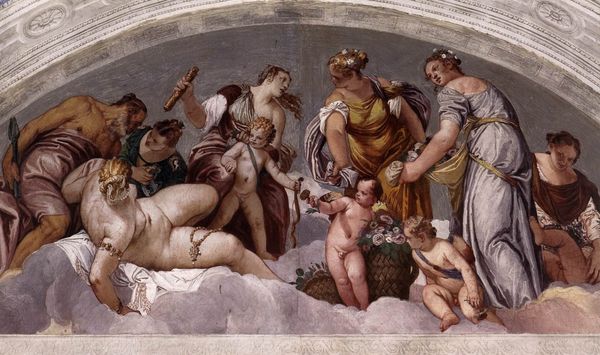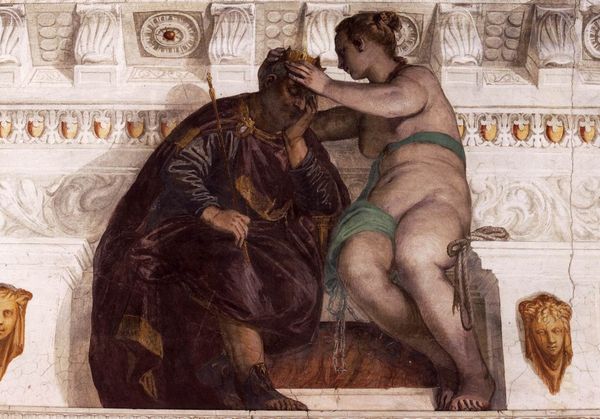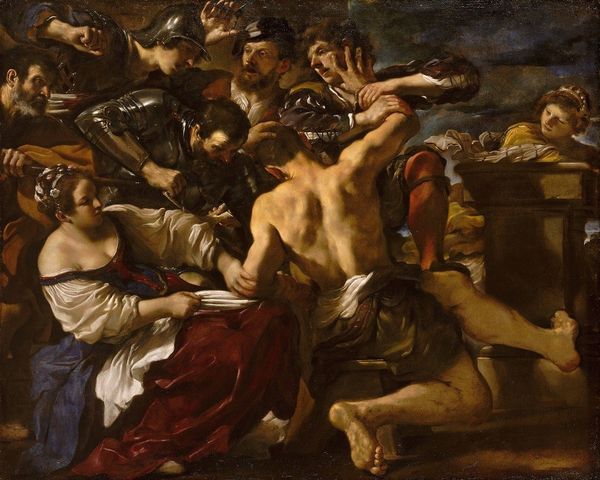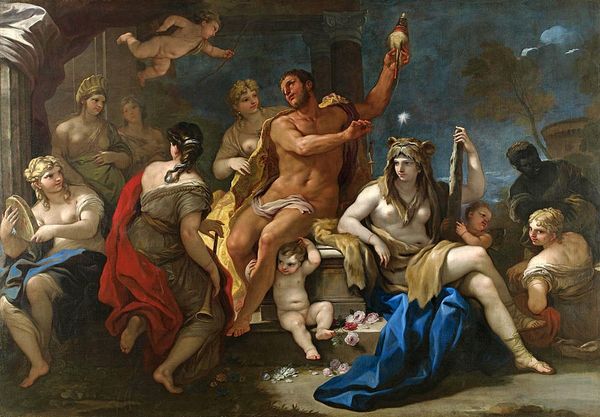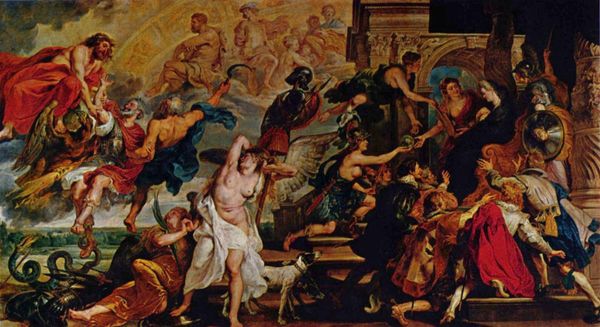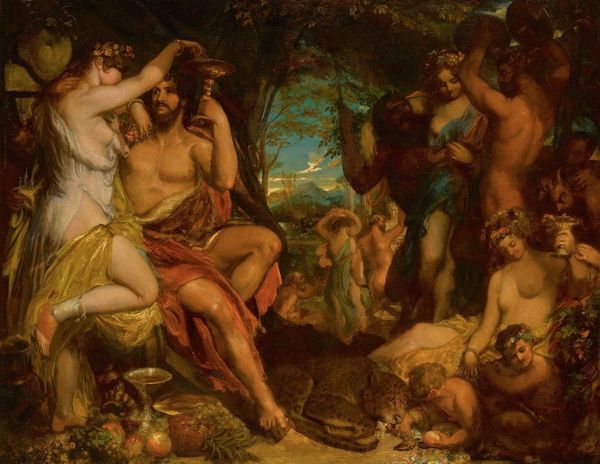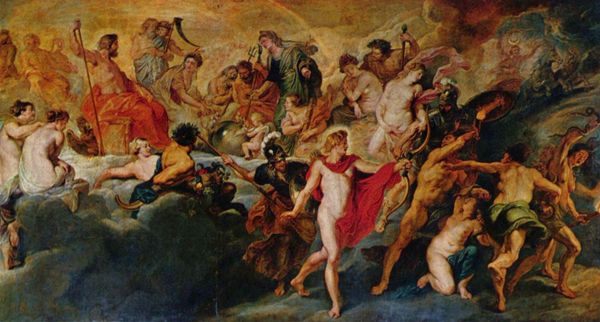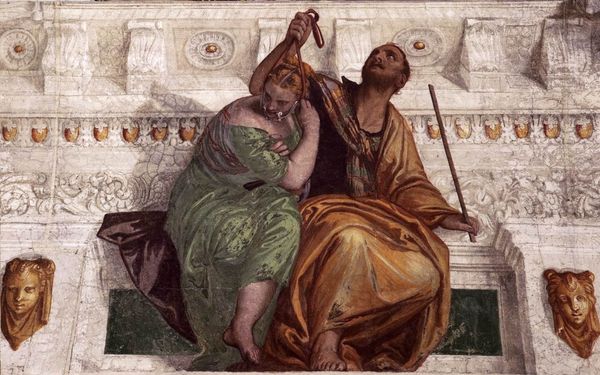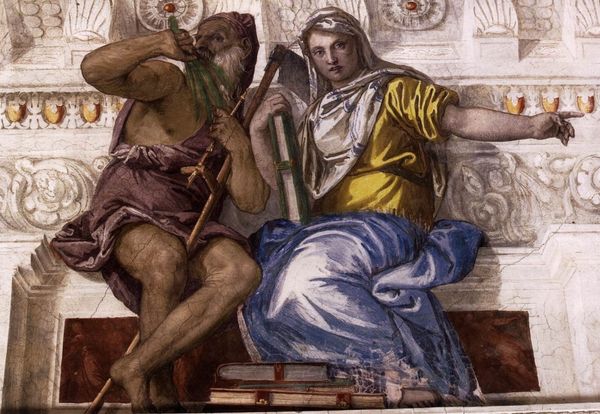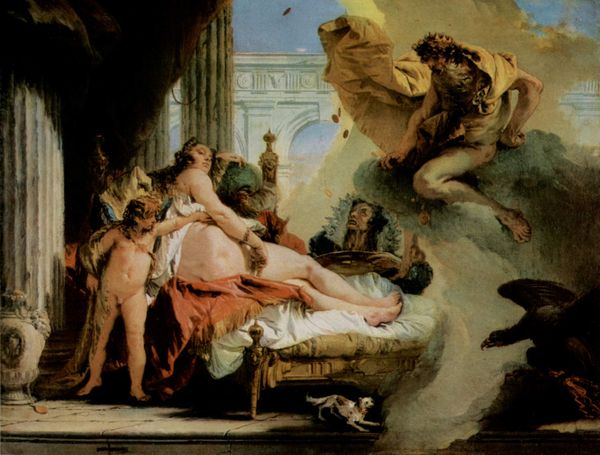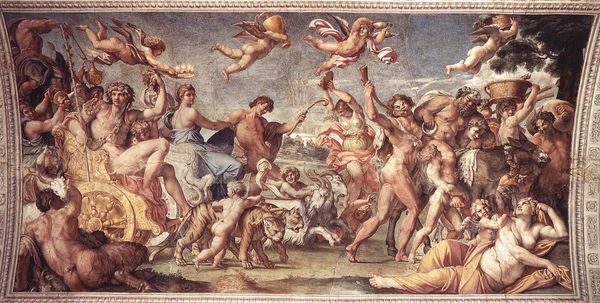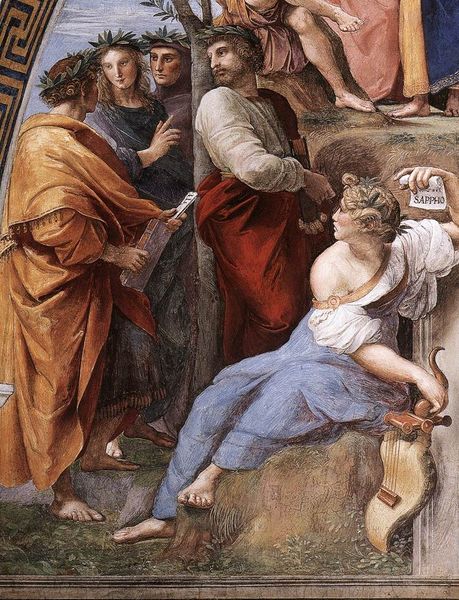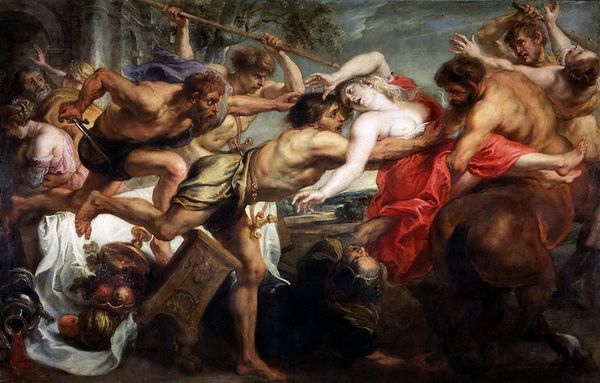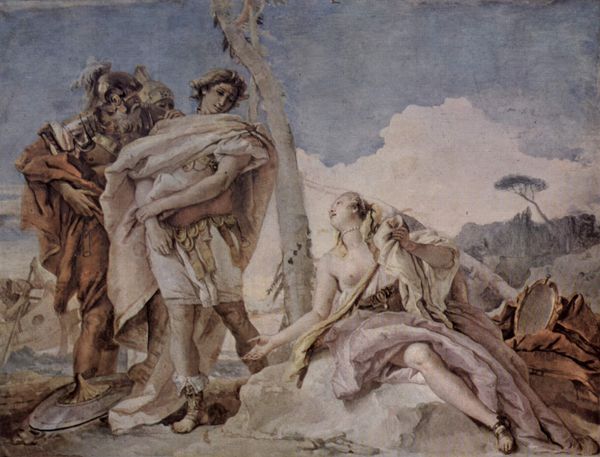
painting, oil-paint
#
venetian-painting
#
allegory
#
painting
#
oil-paint
#
figuration
#
oil painting
#
roman-mythology
#
mythology
#
history-painting
#
academic-art
#
italian-renaissance
Copyright: Public domain
Curator: Paolo Veronese's "Bacchus and Ceres," created in 1561 using oil paint, presents an intriguing allegorical scene. Editor: My initial reaction is one of opulent sensuality. The soft forms and light colours are undeniably inviting. I wonder how Veronese secured the commissions during this period. Curator: It’s interesting you say that. Given Veronese's workshop was known for large-scale decorations that employed a team of craftsmen, assistants and relatives, it is remarkable that a consistently high level of painterly execution was achieved. In essence, he was mass-producing paintings, but it went beyond typical 'artisan' output. Editor: Absolutely. Let’s look at the iconography. We have Bacchus, god of wine, and Ceres, goddess of agriculture, intertwined with symbols of plenty. The grapes, wheat, and other fruits tell a story of prosperity and abundance that speaks to deep-seated cultural aspirations, doesn’t it? The work is a projection of the ideal society, based on earthly riches, as desired in 16th-century Venice. Curator: You're pointing out how those symbols act almost as props to a very staged tableau of wealth and power. And what I find compelling is how the materiality, that thick Venetian impasto of oil paint, allows him to render those signifiers with a sense of robust, tactile reality. This isn’t just a flat representation; it's almost edible. The labour itself creates this mirage of material wealth! Editor: That tactility definitely enhances the painting’s appeal, giving weight to these somewhat abstract ideals. The symbolic interplay is clear: it creates a strong emotional association to feelings of comfort, prosperity, even hedonism! Curator: Veronese was truly attuned to how material production could itself become a powerful aesthetic and social signifier, then. Editor: Indeed. Analyzing its visual language enriches the piece. It’s amazing how the composition, colour choices and figure arrangements subtly reinforce ideas of opulence. This gives the image tremendous, continued impact across different social contexts. Curator: The relationship between Veronese’s workshop methods and these underlying desires for a better standard of living – the production techniques echoing in the thematic focus, you could say – opens up a fascinating understanding of both artistic and social change at the time. Editor: I leave this with a deeper understanding of Veronese’s enduring appeal and how the picture ties our psychological states to historical social patterns through evocative visuals.
Comments
No comments
Be the first to comment and join the conversation on the ultimate creative platform.
